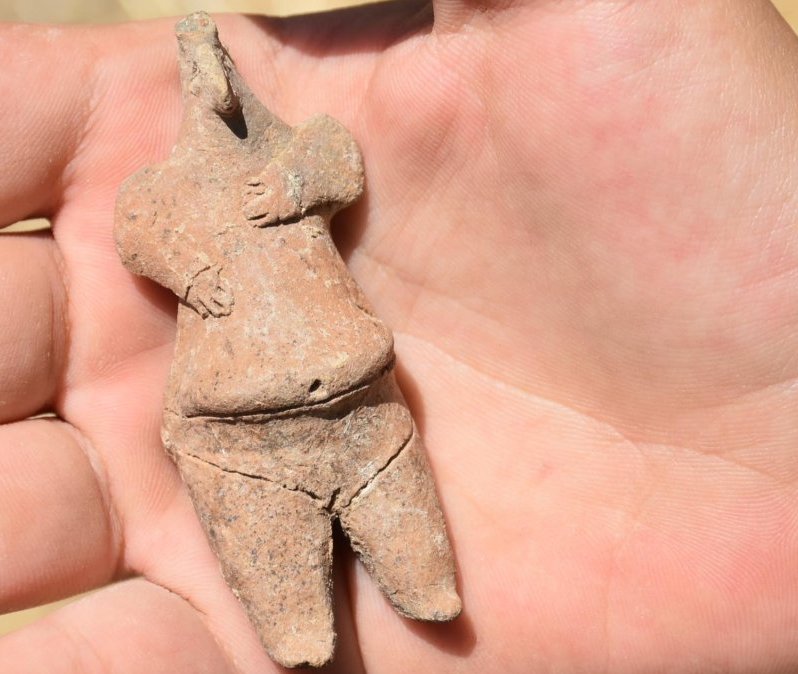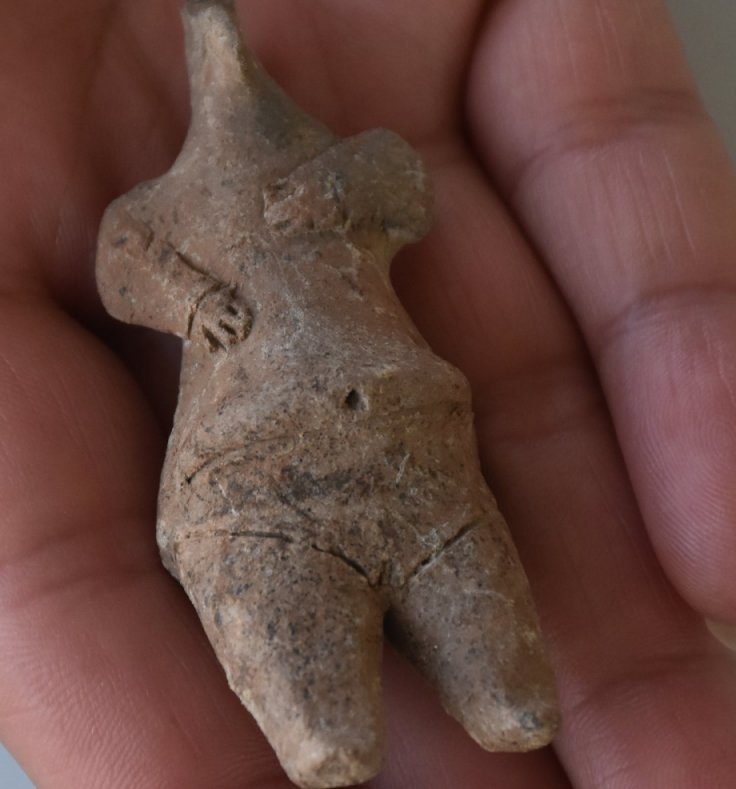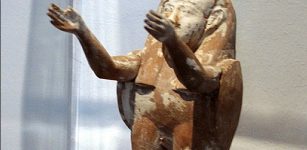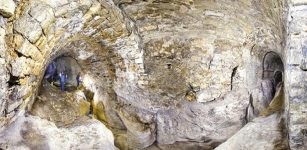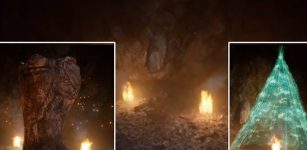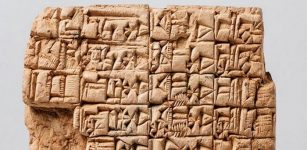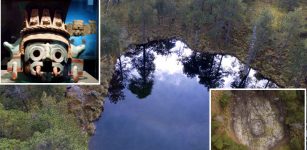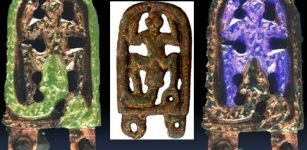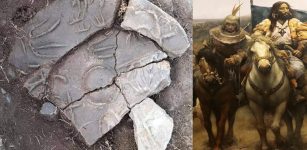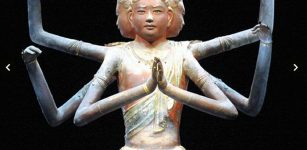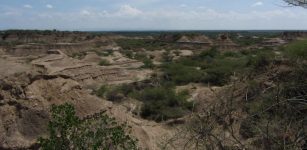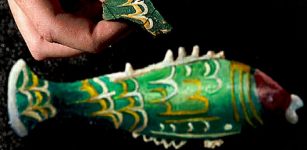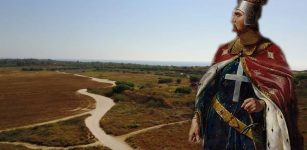7,800-Year-Old Clay Female Figurine Unearthed In Ulucak Mound, Turkey’s Izmir
Conny Waters - AncientPages.com - The archaeological site of the 8850-year-old Ulucak Mound, located in the Kemalpaşa district of the western province of Izmir, Turkey, has been excavated by Prof. Dr. Ozlem Cevik of Trakya University since 2009.
Excavations in the oldest settlement and the first farmer village continue, and now, the archaeologists report a discovery of a clay female statuette dating back 7,800 years.
The 7,800-year-old female figurine found in Ulucak Mound, Izmir, Türkiye, Aug. 8, 2022. (DHA)
The figurine does not represent an accidental discovery because, during the excavations at Ulucak Mound, the team has already unearthed the oldest ceramic production workshop structure.
"Fingerprints of the pottery masters who lived in the city 8000 years ago were also found on the dough used in the production of ceramics. The head of the excavation, Prof. Cevik stated that the workshop is very important as it physically demonstrates the first specialization in ceramic production," wrote DHA.
The Ulucak Mound had been inhabited continuously for 45 generations, with villages established one on top of the other.
"It is among the oldest settlements in Western Anatolia, and we have unearthed findings dating back 8,850 years in the mound," Professor Çevik from the Department of Protohistory and Pre-Asian Archeology at Trakya University's Faculty of Letters informed.
As for the clay female figurine, Çevik explained that these kinds of statuettes were previously thought to depict gods and goddesses; however, they were also found in the dumpsite of the ancient mound, which leads researchers to believe that they were not sacred pieces.
"During the excavations of a house this year, we found a whole female figurine made of clay. We have previously found similar statuettes, but they were usually broken. The latest figurine is important for us as it is the third figurine found in an intact form here," said Çevik, as cited by Daily Sabah.
Archaeologists think the figurines may be related to important events in the family like births, deaths, or the harvest. Another explanation could be that they were used to increase abundance, fertility, or for witchcraft practices.
The Ulucak Mound, located 25 kilometers (15 miles) east of Izmir, features cultural artifacts from the early Neolithic period to the late Roman-early Byzantine era. British archaeologist David French discovered the site in the 1960s, but it remained unexplored for several decades until excavations began in the middle of the 1990s.
The first excavation started in 1995, and archaeologists identified three cultural layers. The first is the Late Roman period at the top; the second represents Early Bronze Age layers underneath Early Byzantine settlements and Late Neolithic settlement at the bottom.
Between 1995 and 2008, the excavations were headed by Altan Çilingiroğlu and the Izmir Archaeological Museum. Since 2009, Prof. Dr. Ozlem Cevik has led the works in Ulucak Mound, the area that has already contributed valuable insights regarding the development of prehistoric cultures in western Turkey.
Written by Conny Waters - AncientPages.com Staff Writer

